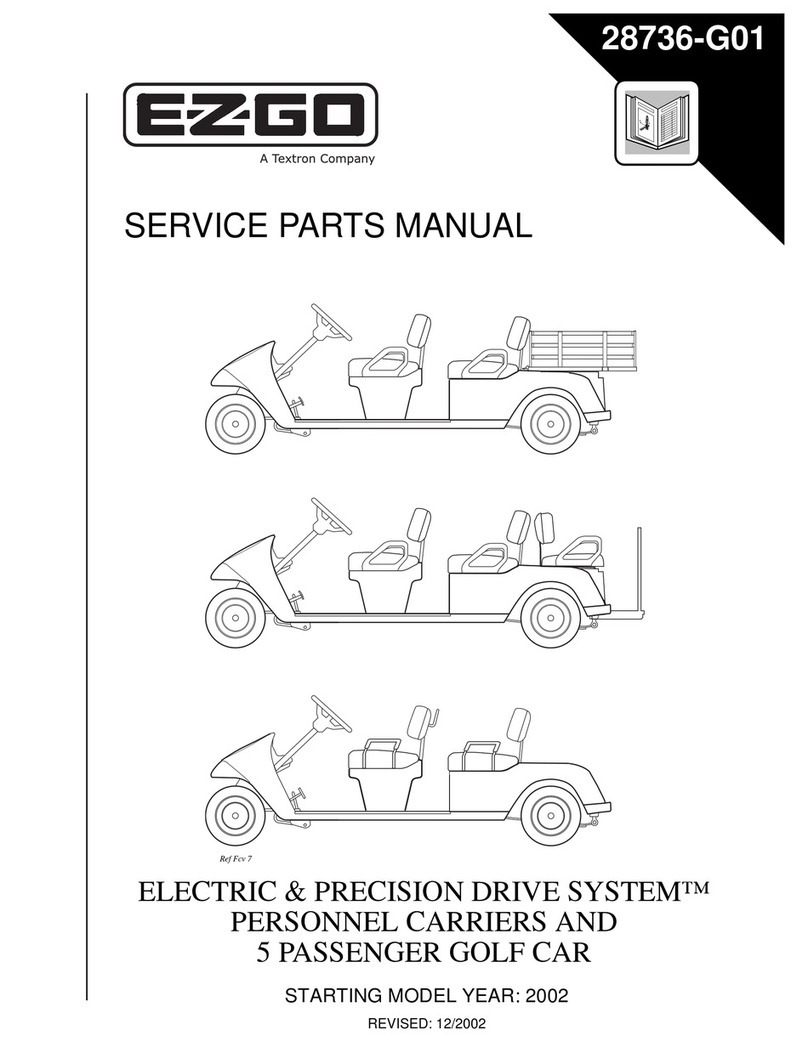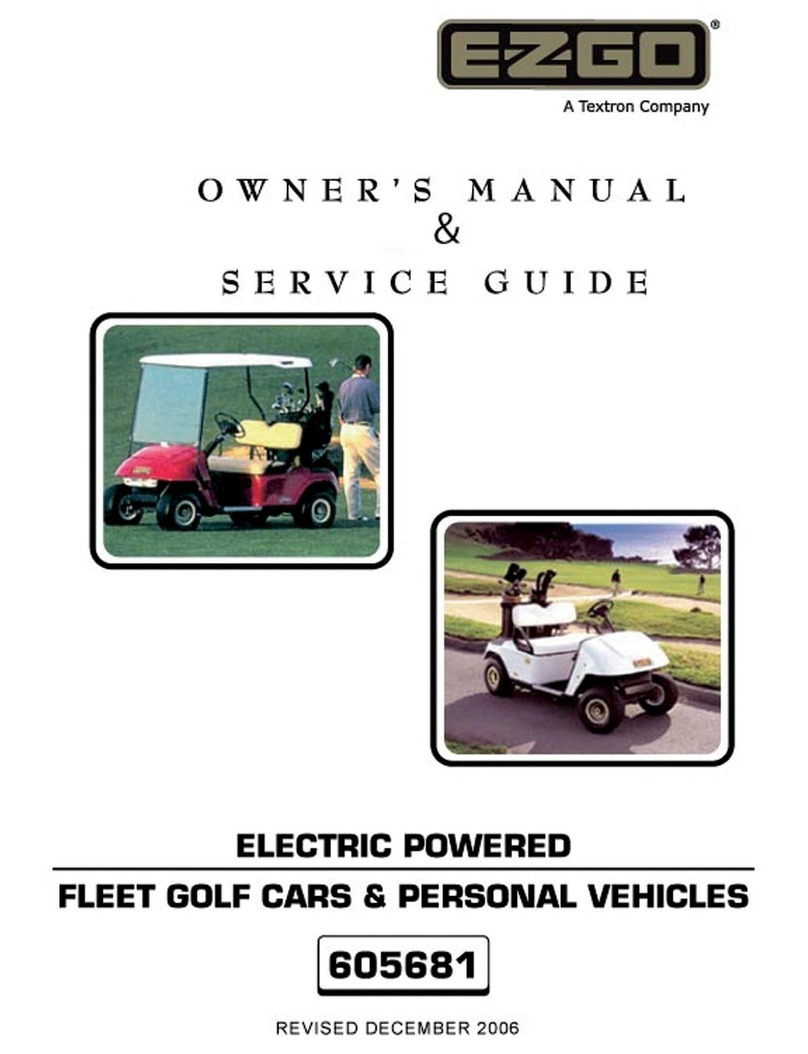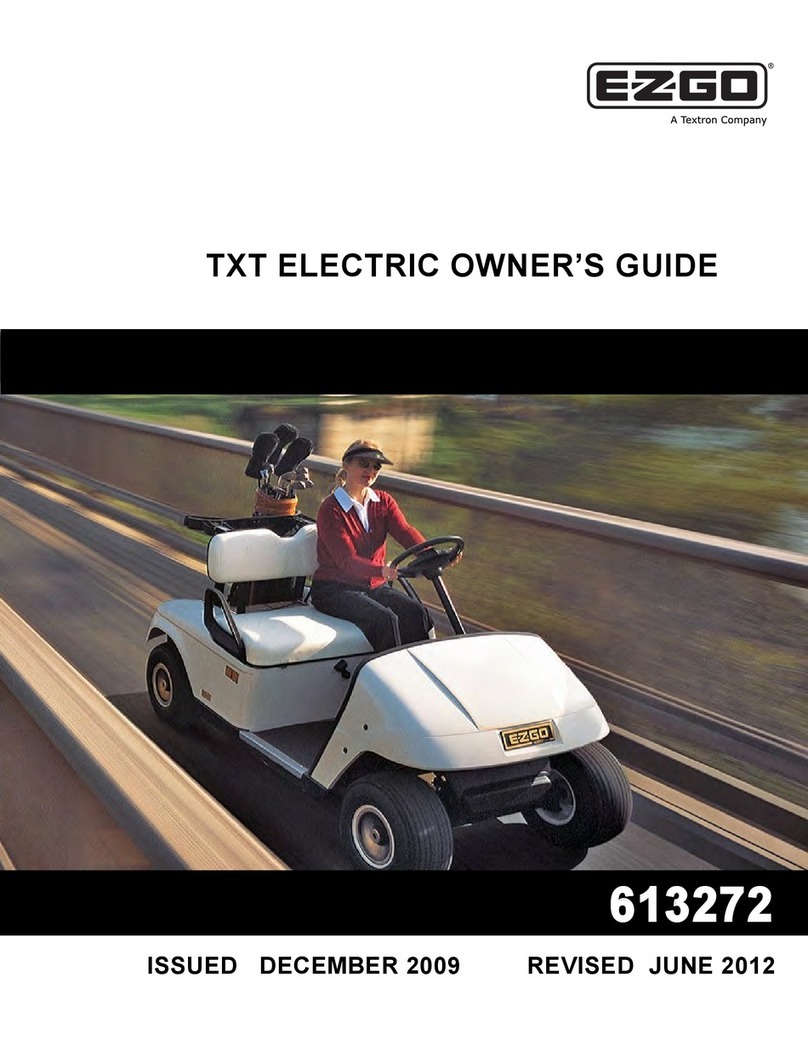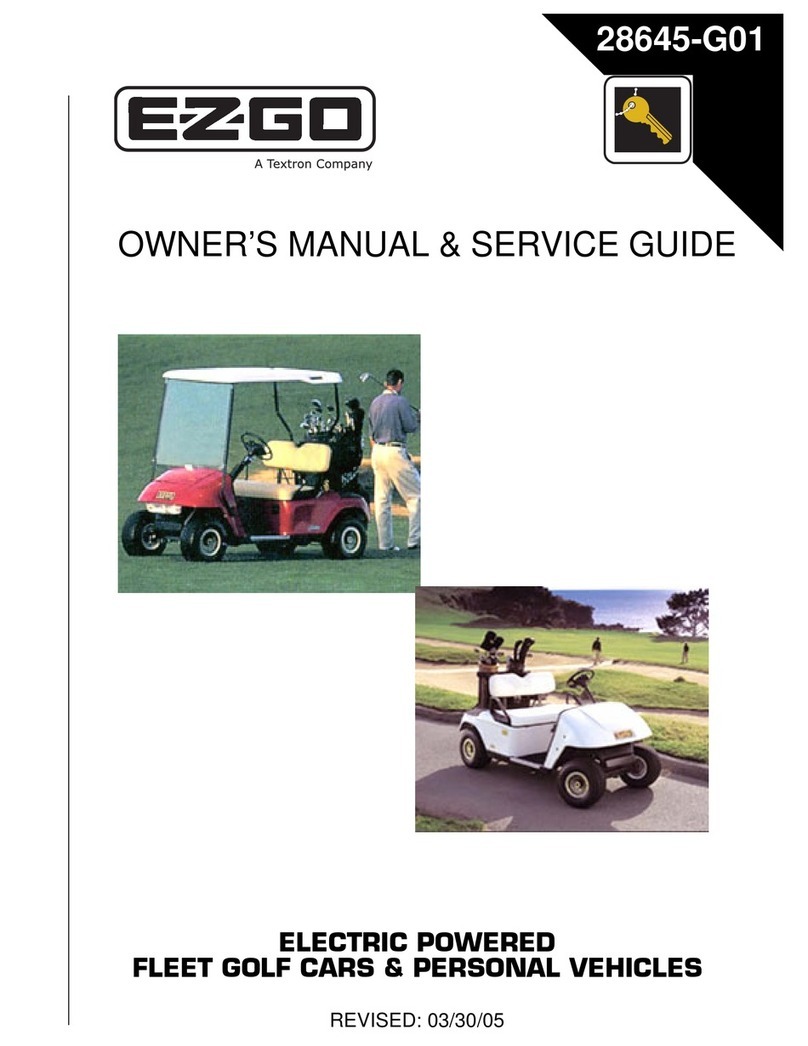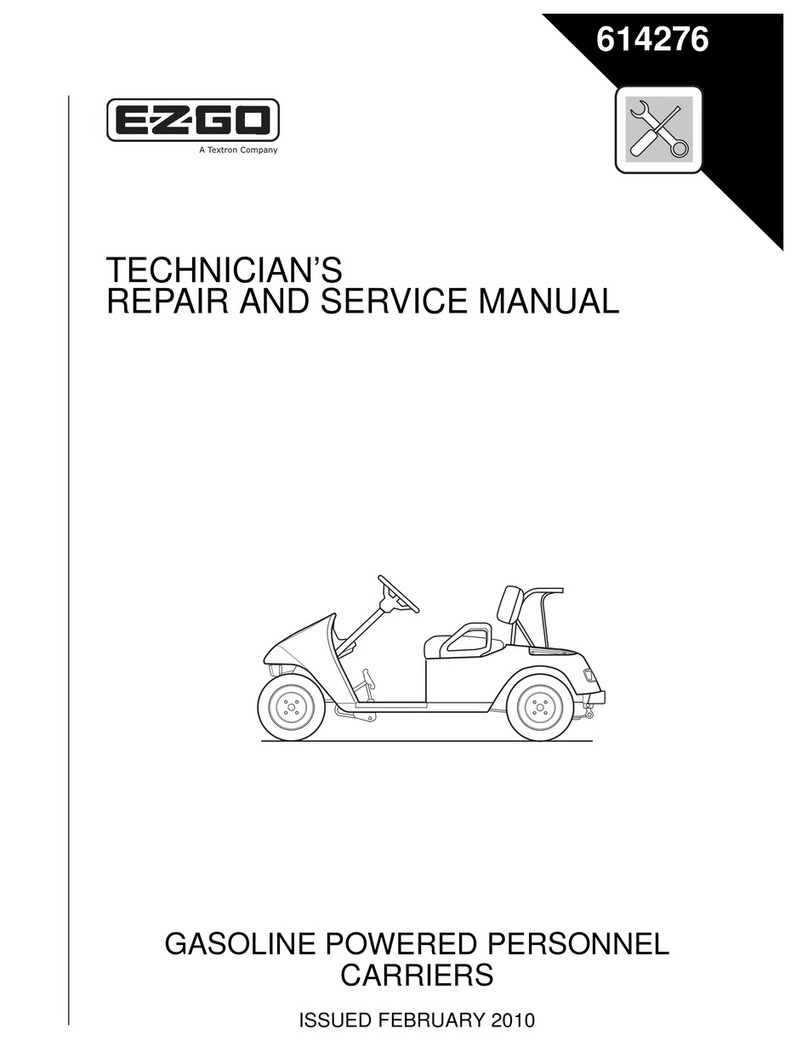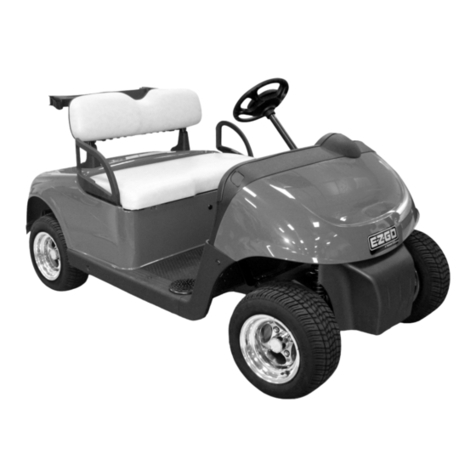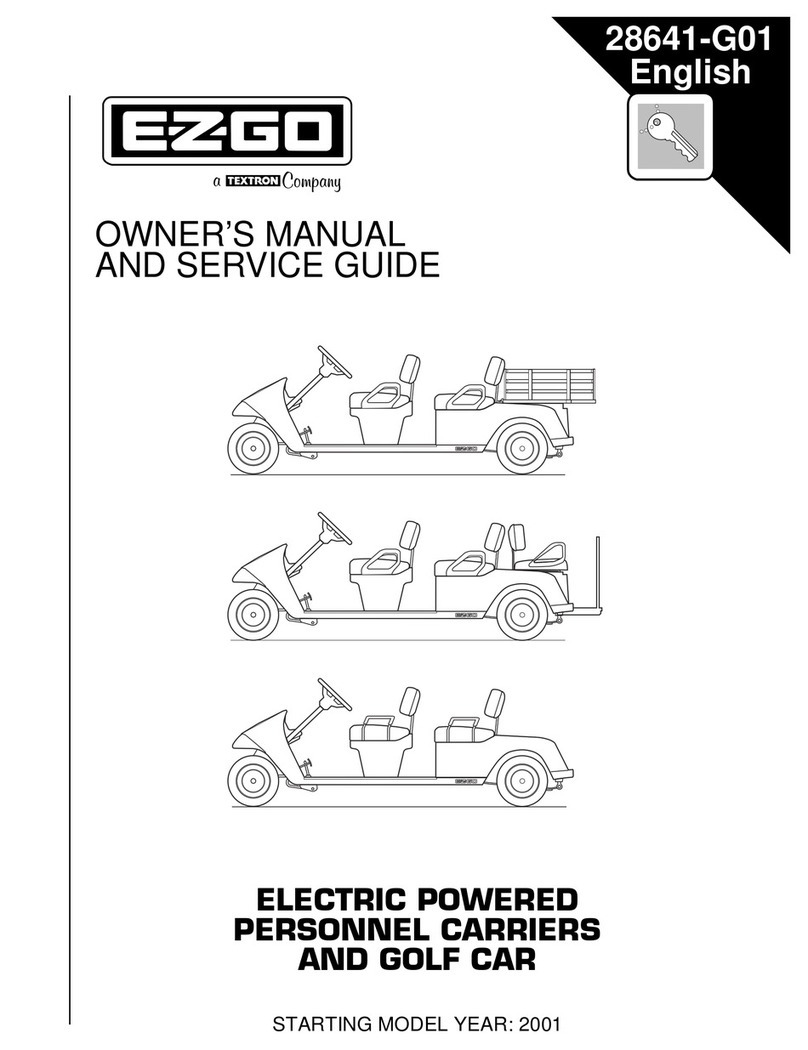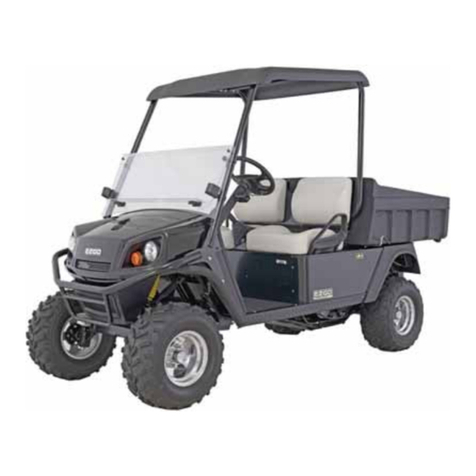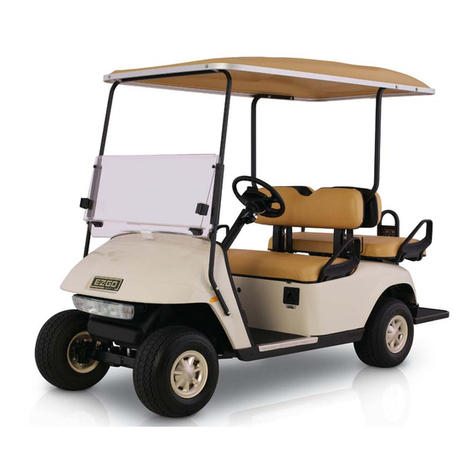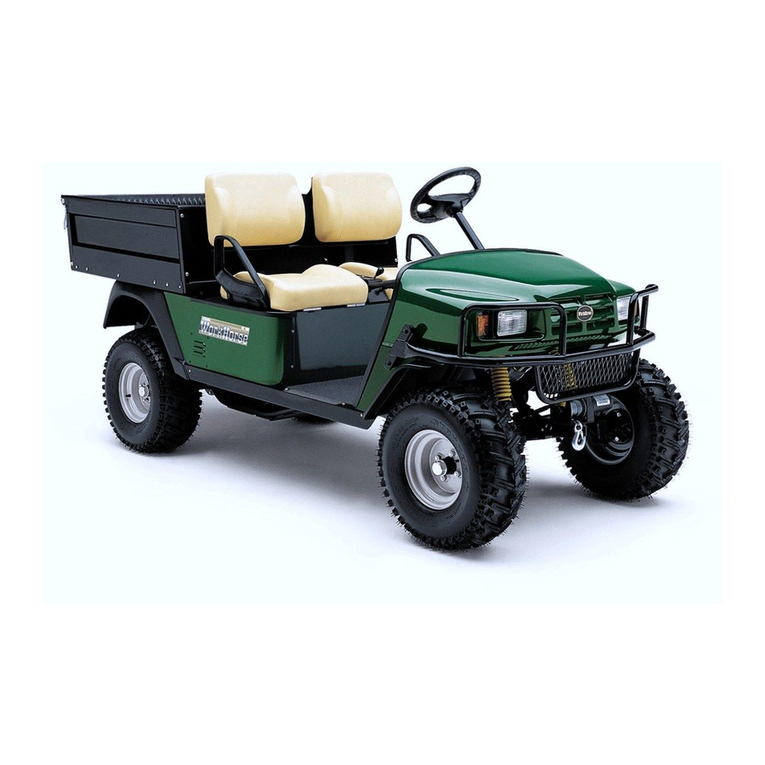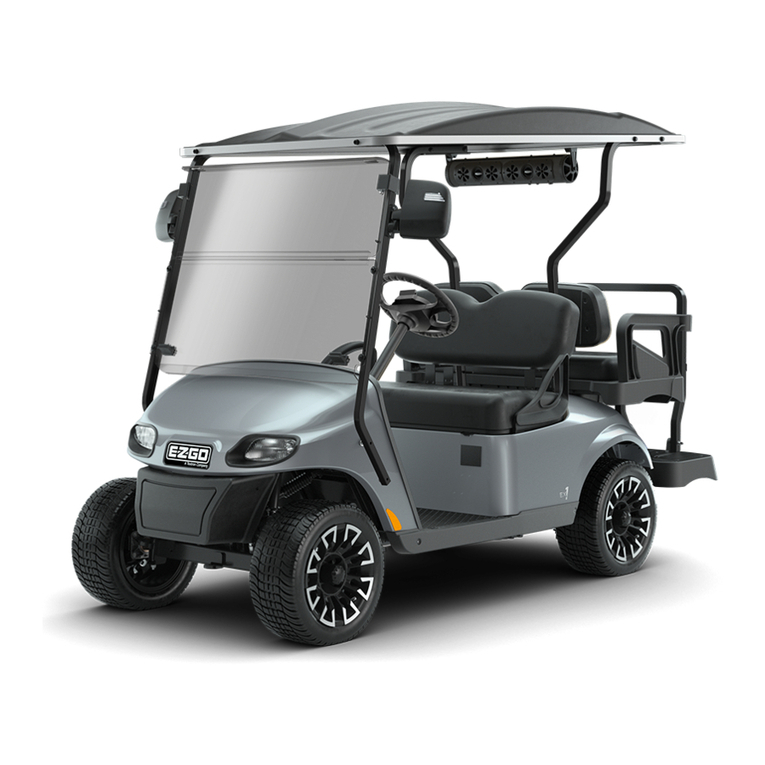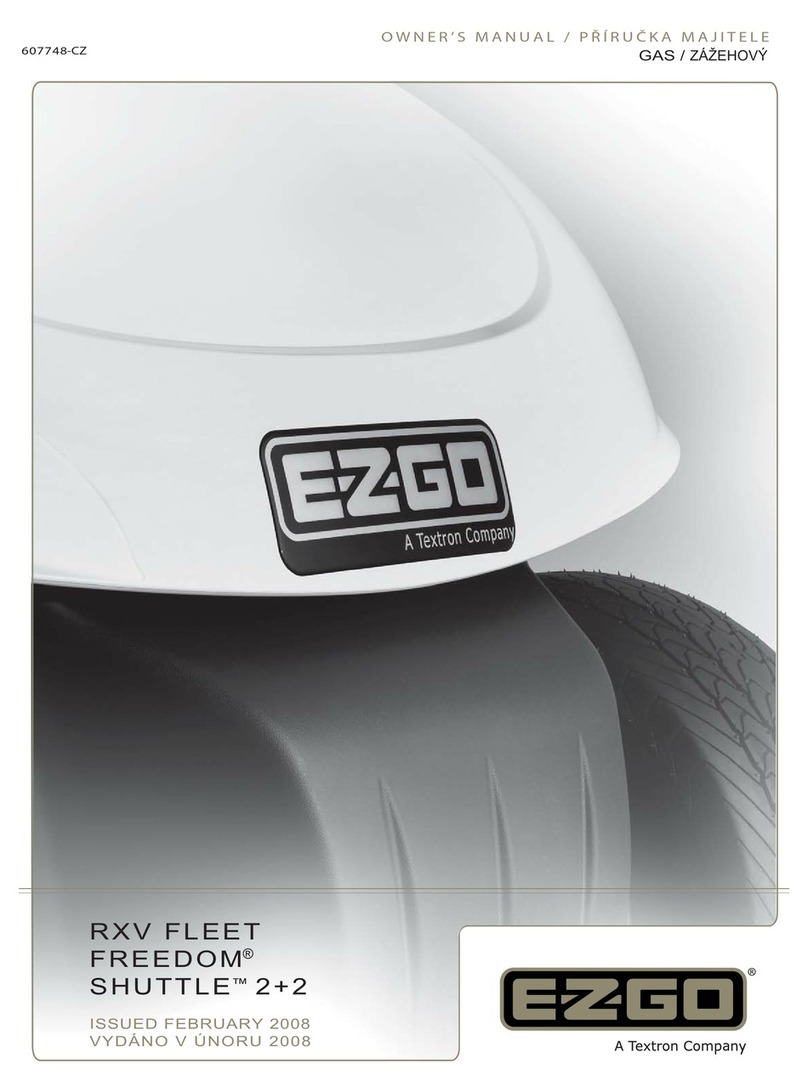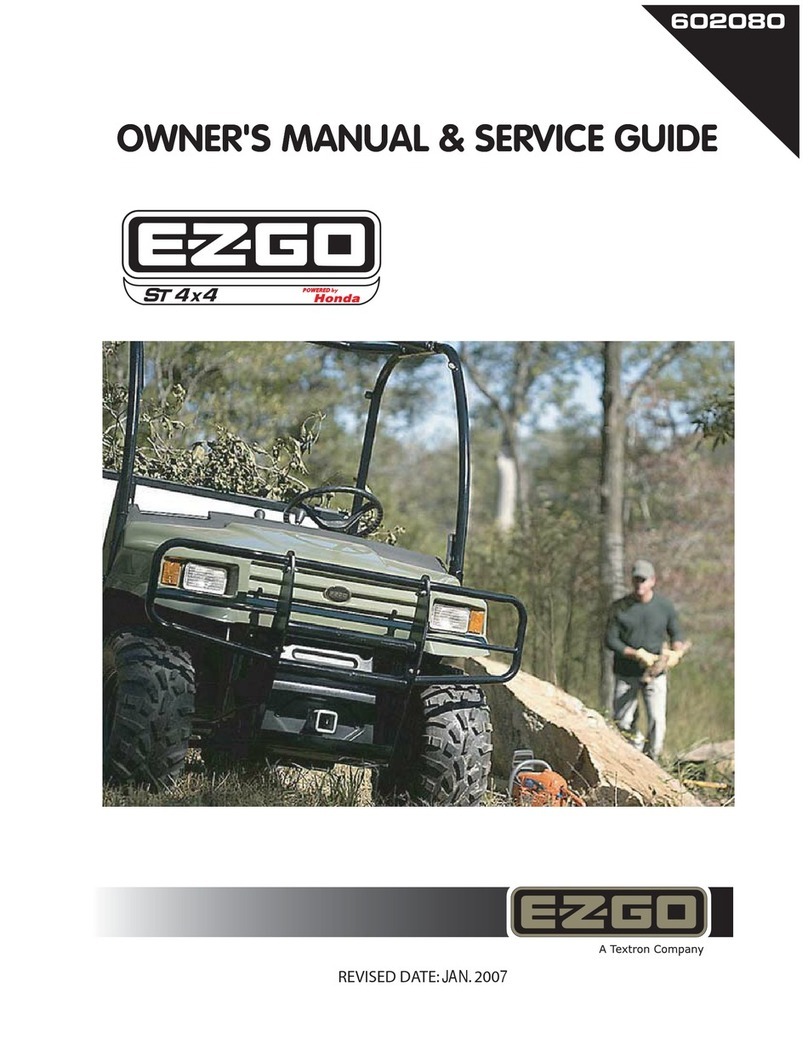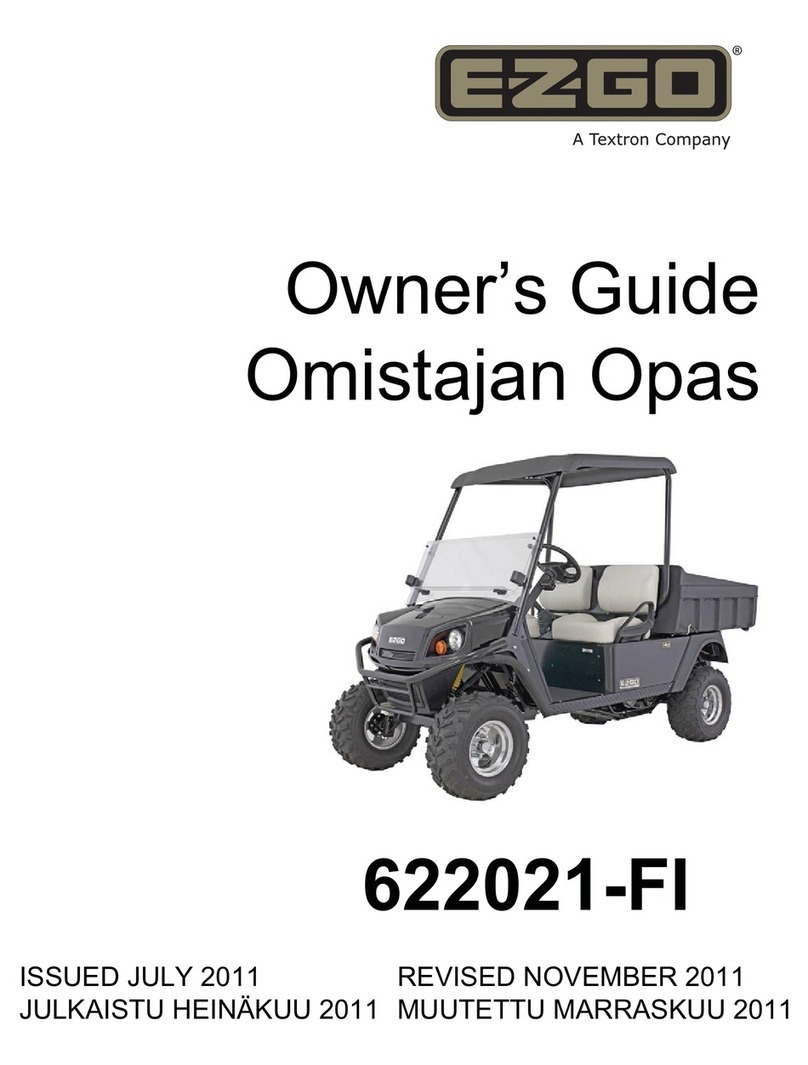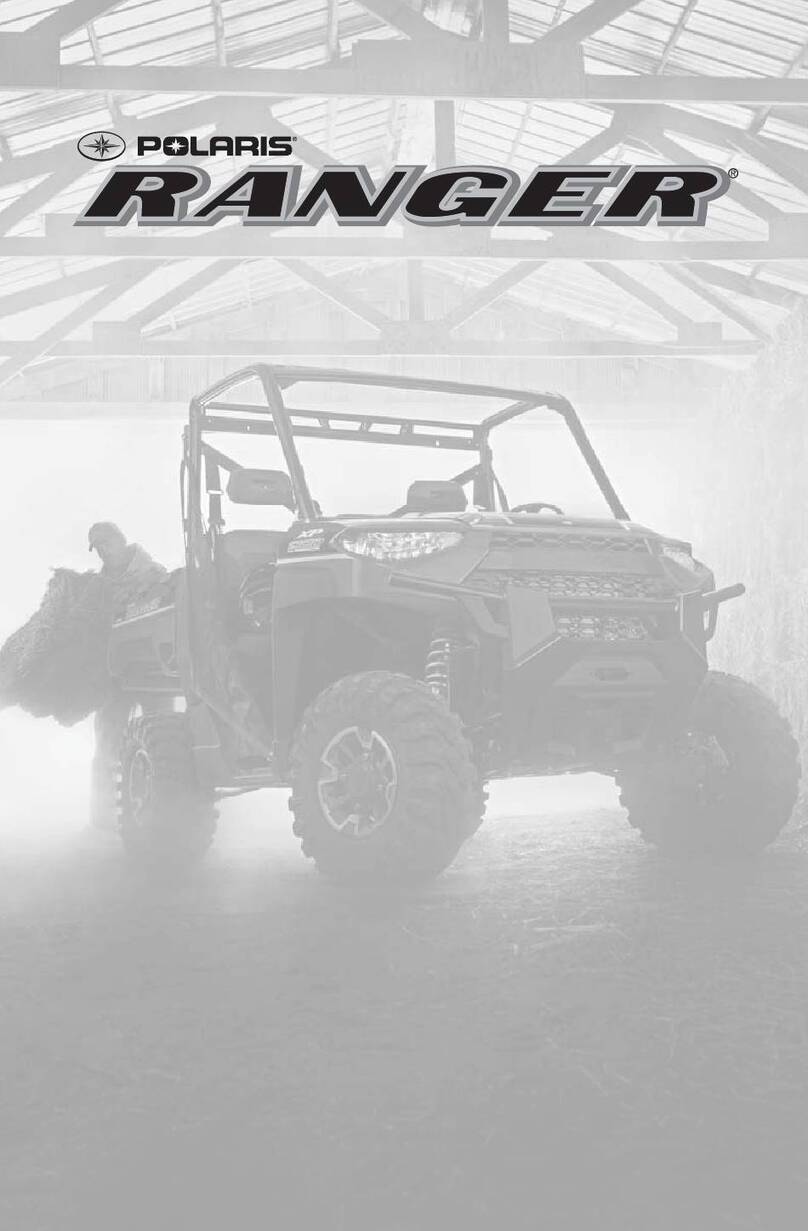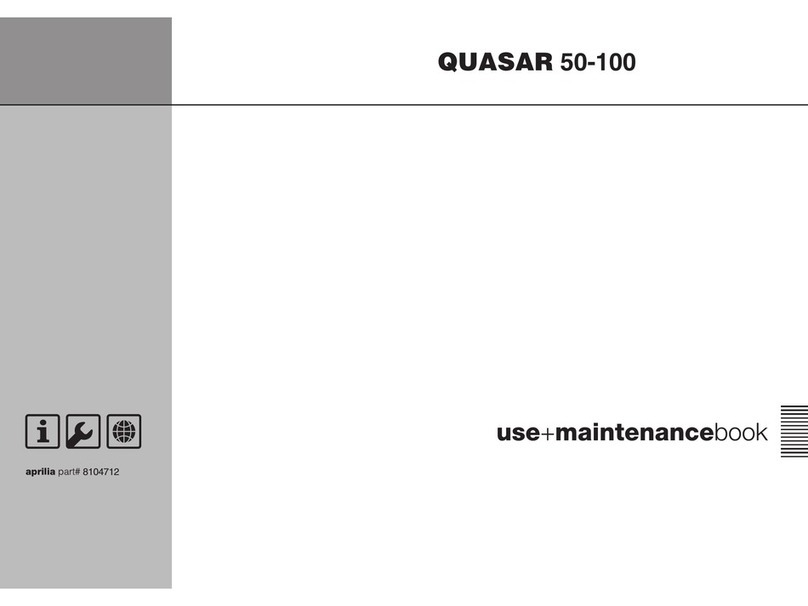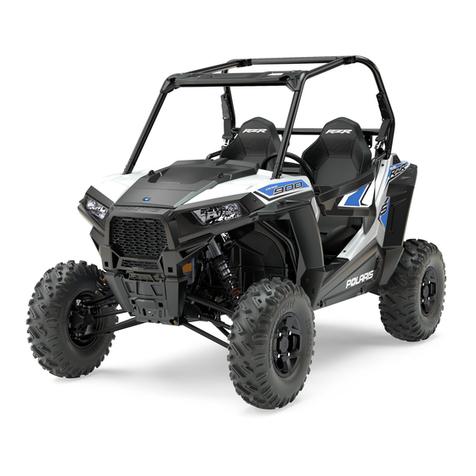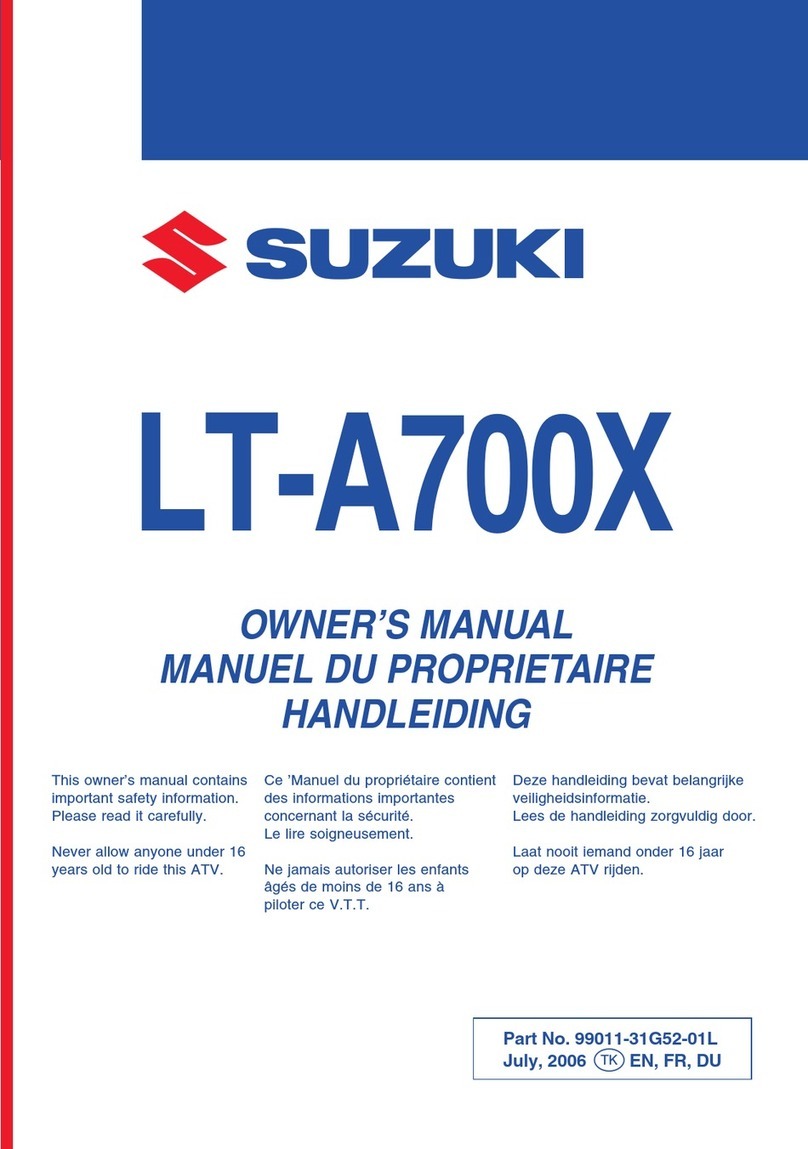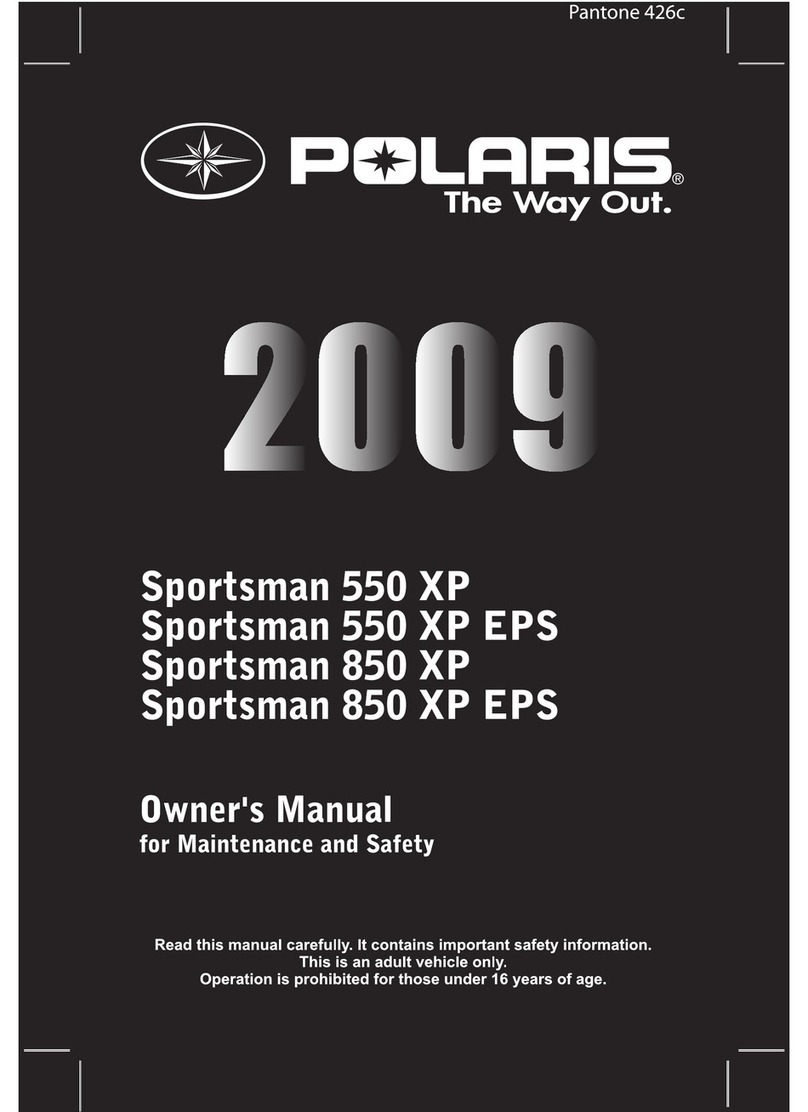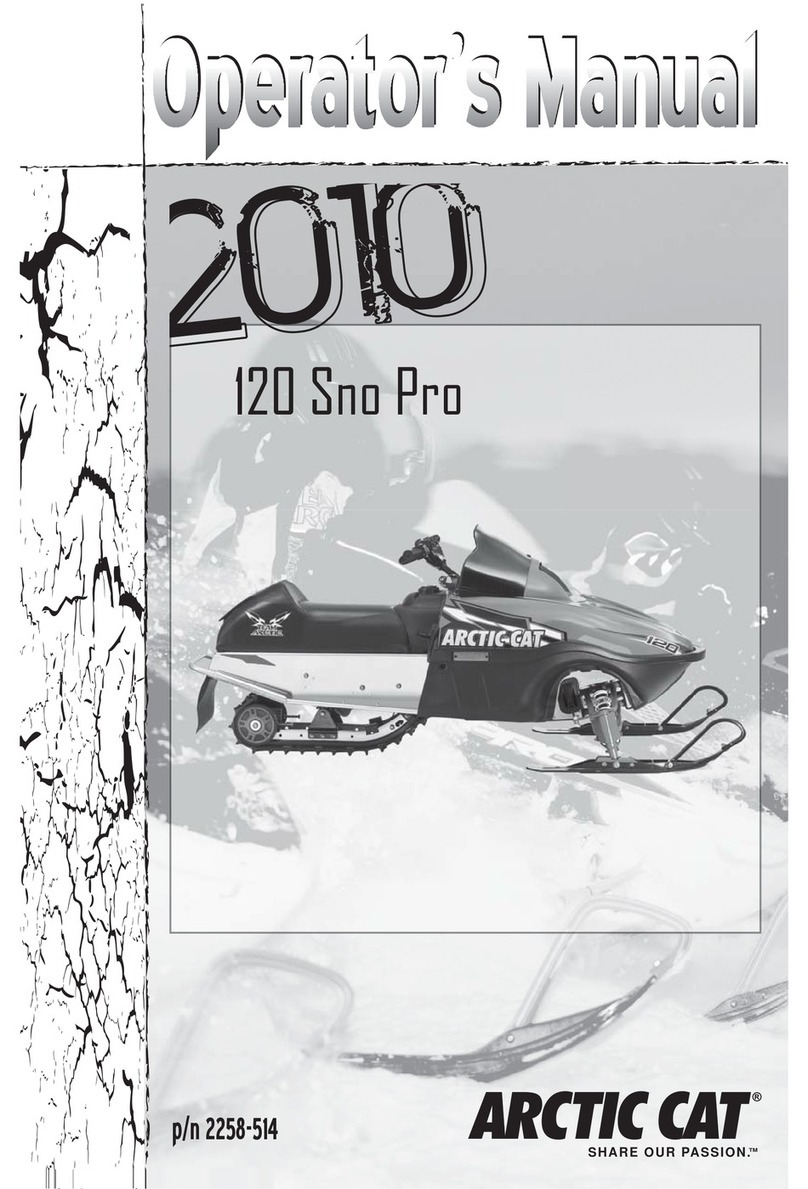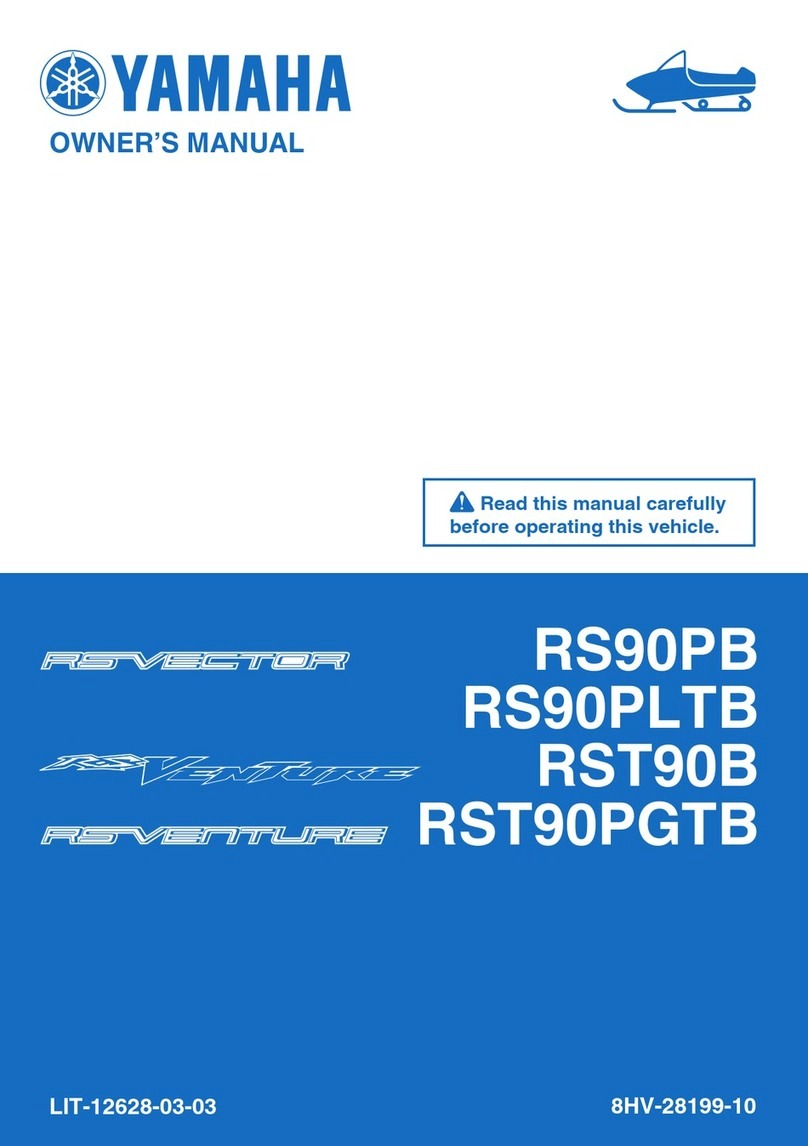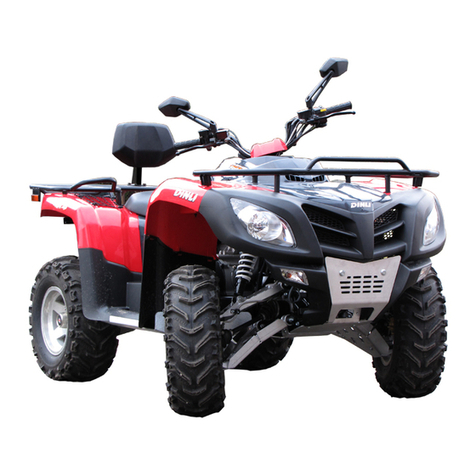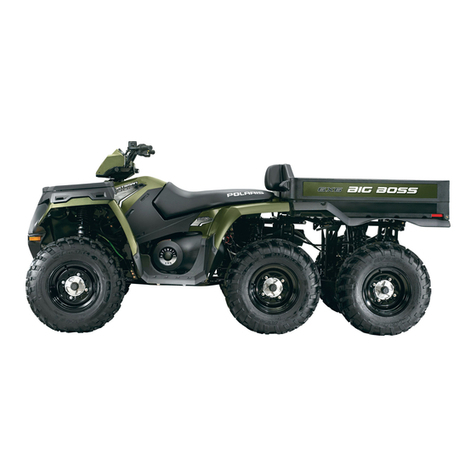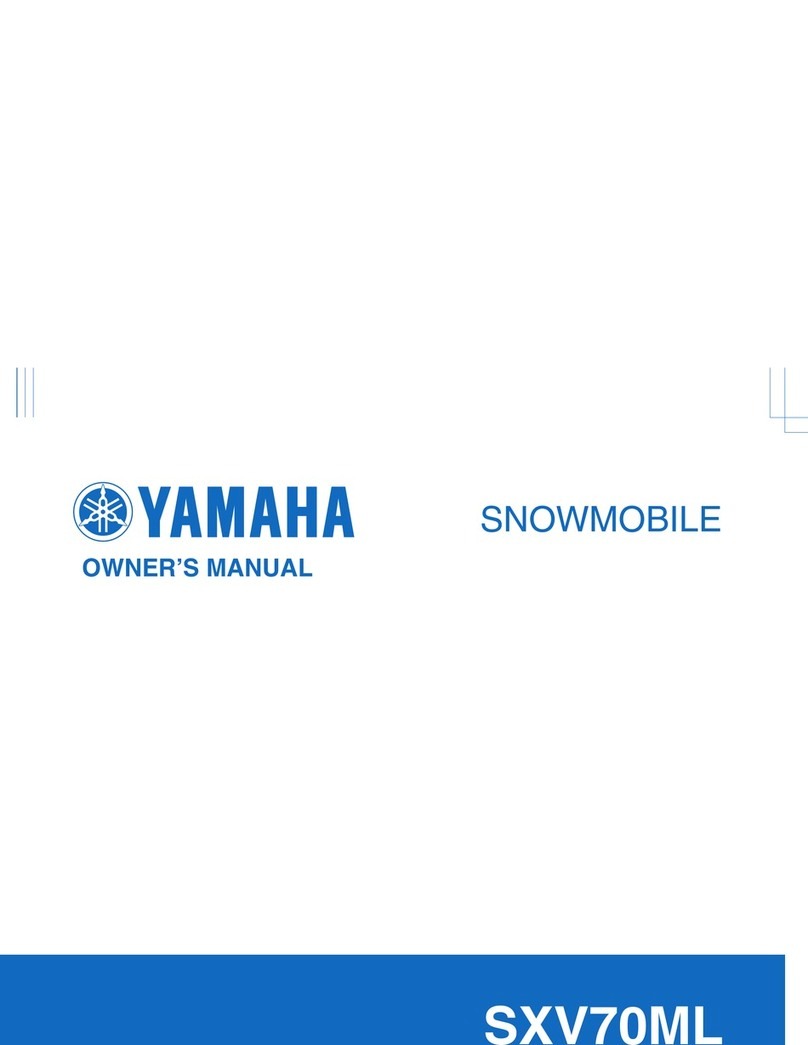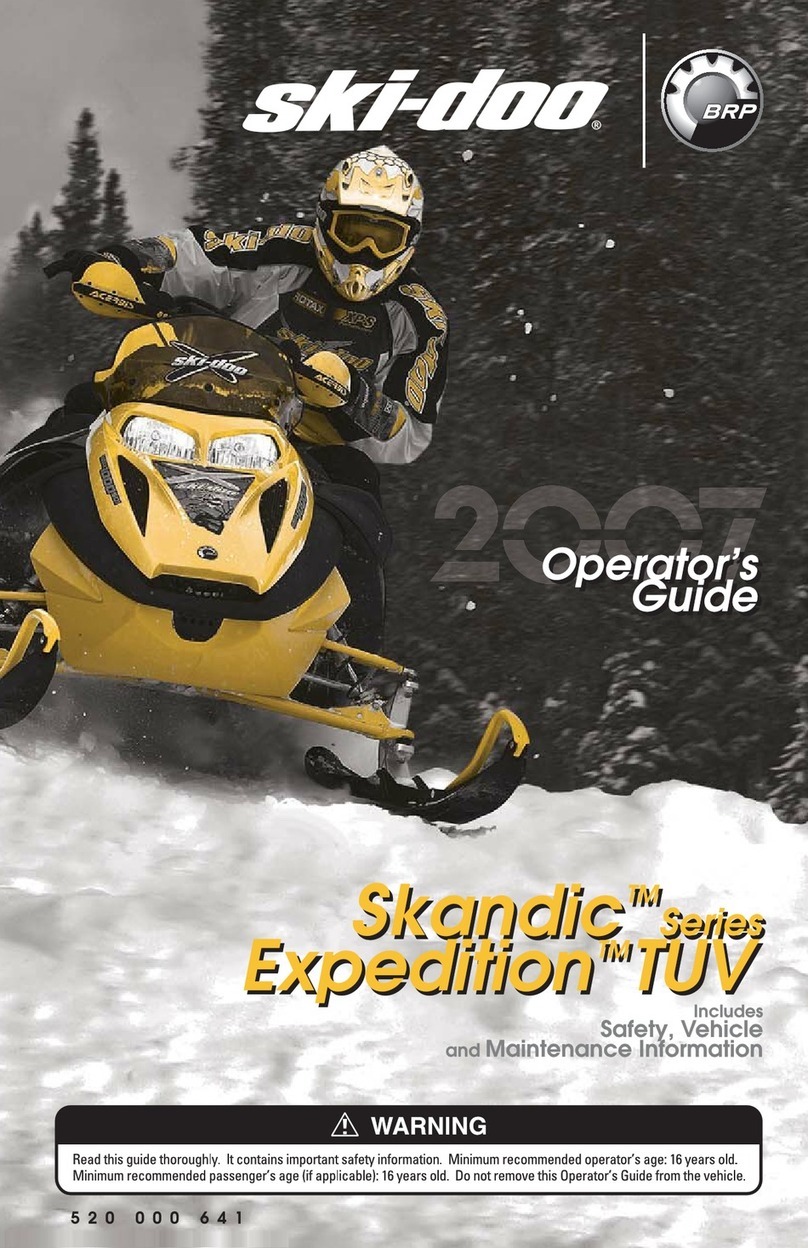
Page vi
SAFETY INFORMATION
Repair and Service Manual
Read all of Section B and this section before working on vehicle. Pay particular attention to all Notices, Cautions, Warnings and Dangers.
B
Drive vehicle only as fast as terrain and safety considerations allow. Consider the terrain and traffic
conditions. Consider the environmental factors which affect the terrain and the ability to control the
vehicle.
Avoid driving fast downhill. Sudden stops or change of direction may result in a loss of control. Use
brake to control speed when traveling down an incline.
Use extra care and reduced speed when driving in poor conditions or on poor surfaces.
Stay in designated areas where provided and avoid steep slopes.
Seat belts must be worn at all times while operating the vehicle.
Keep feet, legs, hands, and arms inside vehicle at all times.
Avoid extremely rough terrain.
Check area behind the vehicle before operating in reverse.
Make sure the direction selector is in correct position before depressing the accelerator pedal.
Slow down before and during turns.
Always bring vehicle to a complete stop before shifting the direction selector.
See GENERAL SPECIFICATIONS for vehicle load and seating capacity.
Read the following text and warnings before attempting to service vehicle:
In any product, components may eventually fail to perform properly as the result of normal use, age, wear, or abuse.
It is impossible to anticipate all possible component failures or the manner in which each component may fail.
A vehicle requiring repair is no longer functioning as designed and therefore could be potentially hazardous. There-
fore, use extreme care when working on any vehicle. When diagnosing, removing, or replacing any components that
are not operating correctly, take time to consider the safety of yourself and others around you.
Some components are heavy, spring-loaded, highly corrosive, explosive, may produce high amperage, or reach high
temperatures. Exposure to battery acid and hydrogen gas could result in serious bodily injury. Be careful to protect
hands, face, feet, and body from injury.
Always use the appropriate tools listed in the tool list and wear approved safety equipment.
Before working on the vehicle, remove all jewelry.
Be sure no loose clothing or hair can contact moving parts.
Use care not to touch hot objects.
Wear eye protection when working on or around the vehicle. In particular, use care when working
around batteries, using solvents or compressed air.
Hydrogen gas is formed when charging batteries. Do not charge batteries without adequate venti-
lation.
Do not permit open flame or anyone to smoke in an area that is being used for charging batteries.
